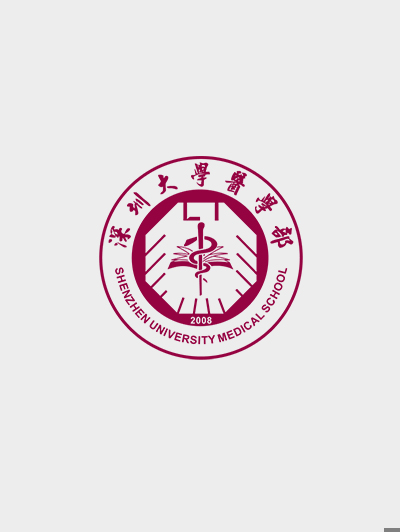
Ding, Huijun (Assistant Professor) Assistant Professor
School of Biomedical Engineering
Assistant Professor
Department of Medical Electronics
BIOGRAPHICAL SKETCH
NAME: Ding, Huijun
POSITION TITLE: Assistant Professor, School of Biomedical Engineering, Health Science Centre, Shenzhen University
EDUCATION/TRAINING
|
INSTITUTION AND LOCATION |
DEGREE
|
Completion Date MM/YYYY
|
FIELD OF STUDY
|
|---|---|---|---|
|
University of Science and Technology of China |
B. Eng |
07/2006 |
Electronic Engineering and Information Science |
|
Nanyang Technological University, Singapore |
Ph.D. |
05/2011 |
Electrical & Electronic Engineering |
|
Chinese University of Hong Kong |
Postdoctoral |
06/2013 |
Electronic Engineering |
A. Personal Statement
My current research interests include speech enhancement, objective measure, biomedical signal processing and rehabilitation engineering. I have published >20 research papers in journals and conferences such as IEEE Transaction on Audio, Speech and Language Processing, Pattern Recognition, and Signal Processing. I have directed a number of funded projects including those funded by the Nature Science Foundation of China (NSFC) and the Guangdong Provincial Natural Science Foundation, raising a total of > ¥ 3,000,000 yen . I have helped organize many international conferences, including acting as the registration chair (ISCSLP 2012) and session chair (ICIA 2015). I obtained the Overseas High-Caliber Personnel (Level C) Award from the Human Resources and Social Security Administration of Shenzhen municipality in 2015, and the High-Level Talent (Level C) in the Nanshan District of Shenzhen from the Human Resources Bureau of Nanshan District in 2017. I am currently mentoring five MEng candidates.
B. Positions and Honors
Positions and Employment
07/2013 – present Assistant Professor, School of Biomedical Engineering, Health Science Centre, Shenzhen University, Shenzhen, China
Organizing International Meetings
1. Registration Chair, the 8th International Symposium on Chinese Spoken Language Processing (ISCSLP), Dec. 5-8, 2012, Hong Kong.
2. Co-organizer, Interdisciplinary Seminar on Language and Communication Disabilities, Jan. 8-11, 2013, Shenzhen, China.
3. Session Chair, IEEE International Conference on Information and Automation (ICIA), Aug 8-10 2015 Lijiang, Yunnan, China.
Other Experience and Honors
1. Editorial board, IEEE Transaction on Audio, Speech and Language Processing (IF: 2.185): 2012-present
2. Editorial board, EURASIP Journal on Advances in Signal Processing (IF: 1.222): 2012-present
3. Editorial board, International Journal of Acoustic and Vibration (IF: 0.337): 2012-present
4. Editorial board, ISCSLP: 2012
5. Editorial board, ICICS: 2009
6. 2014 Overseas High-Caliber Personnel (Level C) Award, Human Resources and Social Security Administration of Shenzhen Municipality
7. 2015 Shenzhen University Young Teacher Education and Teaching Abilities Training Upgrading Plan (Excellent), Shenzhen University
8. 2016-2017 Academic Year Outstanding Undergraduate Teacher Award, Shenzhen University
9. 2017 High-Level Talent (Level C) in Nanshan District of Shenzhen, Human Resources Bureau of Nanshan District, Shenzhen
10. 2017 Excellent Class Director of Shenzhen University Tencent Mentor Award, Shenzhen University
11. 2017 Tencent Outstanding Teacher, Shenzhen University
C. Contributions to Science (*: corresponding/co-corresponding author)
A full list of my publications is enclosed at the end of this document.
1. Single channel speech enhancement
Speech is the most natural form of communication for humans. Thus speech processing is developing into an indispensable part of this modern world for numerous applications, e.g. hearing aids and cellular ratio telephony systems. Owing to the imperfections in speech acquisition, transmission and storage, speech signals are often severely degraded. Speech enhancement algorithms can be used to improve the quality of speech as a preprocessor in speech coding or recognition systems. Over the past decades, many speech enhancement algorithms have been proposed. I proposed three transform domain speech enhancement algorithms and a psychoacoustic modeling during my PhD and postdoctoral studies. The first one is a DFT-based speech algorithm that considers the 2D relations of DFT coefficients by incorporating an image processing–based technique. The second is a DFT-based post-processor that was proposed for over-attenuated speech components regeneration. Another transform, DCT-based algorithm was proposed to reduce the variance between frames and achieves a better noise reduction. Finally, a 2D Psychoacoustic modeling of equivalent masking effects was proposed to improve the performance of automatic speech recognition tasks.
1) Peng Dai, Frank Rudzicz, Ing Yann Soon, Alex Mihailidis, Huijun Ding*. 2015. 2D Psychoacoustic modeling of equivalent masking for automatic speech recognition. Signal Processing115, 9-19.
2) Huijun Ding, Ing Yann Soon and Chai Kiat Yeo. 2011. A DCT based speech enhancement system with Pitch Synchronous Analysis. IEEE Trans. Audio, Speech and Language Processing19, 2614-2623.
3) Huijun Ding, Ing Yann Soon and Chai Kiat Yeo. 2010. Over-attenuated components regeneration for speech enhancement. IEEE Trans. Audio, Speech and Language Processing18, 2004--2014.
4) Huijun Ding, Ing Yann Soon, Soo Ngee Koh and Chai Kiat Yeo. A spectral filtering method based on hybrid wiener filters for speech enhancement. Speech Communication51, 259--267.
2. Objective measures for speech quality
Generally, enhanced speech should be evaluated either by the subjective listening test or objective measure. Objective measure is favorable as it is convenient and time saving. However, a valid objective measure needs to correlate well with subjective listening tests, and for that reason much research has been focused on developing objective measures that model various aspects of the auditory system. All the traditional objective measures tend to give one score for one resulting speech to show how similar it is to the original speech. This approach is unable to give specific judgments on speech distortion or noise reduction, despite speech distortion and noise reduction being two key metrics to evaluate the resulting speech quality. Novel objective measures based on perceptual information was proposed by my group to give a multi-dimensional description for the quality of the resulting speech, especially in terms of the speech distortion and noise reduction aspects. With the proposed objective measure, the most suitable speech enhancement algorithm can be selected to fit the purpose of different applications. Moreover, speech enhancement algorithms can be improved accordingly based on their scores of different evaluation dimensions, which will benefit all the speech enhancement algorithms.
1) Huijun Ding, Tan Lee, Ing Yann Soon, Chai Kiat Yeo, Peng Dai and Guo Dan*. 2015. Objective measures for quality assessment of noise-suppressed speech. Speech Communication71, 62-73.
2) Huijun Ding, Tan Lee and Ing Yann Soon. Two objective measures for speech distortion and noise reduction evaluation of enhanced speech signals. IEEE Proc. International Symposium on Chinese Spoken Language Processing (ISCSLP), Dec. 5-8, 2012, Hong Kong.
3) Huijun Ding, Ing Yann Soon and Chai Kiat Yeo. 2010. Over-attenuated components regeneration for speech enhancement. IEEE Trans. Audio, Speech and Language Processing18, 2004--2014.
3. Acceleration signal processing for finger gesture recognition
Modeling and recognizing human hand gestures is an extremely important research topic, and it is the core of any intelligent human–computer interaction system with applications in automatic control, virtual reality, augmented reality, human–robotic interaction and computer animation. This area has attracted increasing attention and interest in biomedical engineering over recent years, especially in terms of prosthesis control and wearable rehabilitation systems. As it is difficult to model gestures accurately from images and gesture appearances can vary a lot, it is a difficult task to recognize and track hand gestures. We proposed a motion-intent-based finger gesture recognition system to correctly identify the tapping of every finger for the first time. Inertial sensors were adopted to detect the mechanomyogram signals from forearm muscle groups. As the hand motions are controlled by voluntary isometric contractions, the motion intent of finger movements can be recognized by analyzing the mechanomyogram signals. An average recognition rate of 95.20% could be achieved by our system.
1) Huijun Ding, Qing He, Yongjin Zhou, Guo Dan* and Song Cui. 2017. An Individual Finger Gesture Recognition System Based on Motion-Intent Analysis Using Mechanomyogram Signal. Frontiers in Neurology8(573).
2) Huijun Ding, Qing He, Lei Zeng, Yongjin Zhou, Minmin Shen, and Guo Dan*. 2017. Motion intent recognition of individual fingers based on mechanomyogram. Pattern Recognition Letters 88, 41-48.
4. Biomedical image processing and machine/deep learning methods
Our group continues to learn machine/deep learning algorithms through cooperation and communication with other experienced groups. Machine learning algorithms are closely related to the computer vision field, thus cooperative topics that we are working on are mainly based on image and video signal processing, including magnetic resonance image processing for dementia disease diagnosis, and image processing assessment frameworks for unilateral peripheral facial paralysis.
1) Wei Huang, Huijun Ding*, Guang Chen. 2018. A Novel Deep Multi-channel Residual Networks-based Metric Learning Method for Moving Human Localization in Video Surveillance. Signal Processing 142, 104-113.
2) Zhe-Xiao Guo, Guo Dan, Jianghuai Xiang, Jun Wang, Wanzhang Yang, Huijun Ding, Oliver Deussen, Yongjin Zhou*. 2017. An unobtrusive computerized assessment framework for unilateral peripheral facial paralysis. IEEE Journal of Biomedical and Health Informatics99, 1-1.
3) Wei Huang, Chuyun Wan, Jing Zeng, Huijun Ding*, Peng Zhang, Guang Chen. 2017. Pixel-wise partial volume effects correction on arterial spin labeling magnetic resonance images. Multimedia Tools and Applications, 1-20.
4) Wei Huang, Jing Zeng, Chuyu Wan, Huijun Ding*, and Guang Chen. 2017. Image-based dementia disease diagnosis via deep low-resource pair-wise learning. Multimedia Tools and Applications, 1-18.
5) Zhanpeng Zhang, Wei Zhang*, Huijun Ding, Jianzhuang Liu and Xiaoou Tang. 2015. Hierarchical facial landmark localization via cascaded random binary patterns. Pattern Recognition 48(4), 1277-1288.
6) Shifeng Chen, Qiang Zhou and Huijun Ding*. 2014. Learning boundary and appearance for video object cutout. IEEE Signal Processing Letters 21, 101-104.
D. Research Support
Ongoing Research Support
Guangdong Medical Research Fund (A2018055)
07/01/2018 to 06/30/2020
Huijun Ding, PI ¥10,000
Non-invasive sick voice screening method based on feature selection
Shenzhen High-level Talent Research Start-up Project (827-000088)
01/01/2016 to 12/31/2018
Huijun Ding, PI ¥2,700,000
Research on Speech Signal Processing Methods for Rehabilitation of Speech and Hearing Impairment
Completed Research Support
Guangdong Natural Science Foundation (S2012010010295)
10/01/2012 to 10/01/2014
Huijun Ding, PI ¥50,000
Single channel speech enhancement and objective measure
Natural Science Foundation of China (NSFC) (61201440)
01/01/2013 to 12/31/2015
Huijun Ding, PI ¥240,000
Speech enhancement and objective measure for quality assessment based on perceptual information
Shenzhen Science and Technology Innovation Commission grant (JCYJ20140418095735605)
12/10/2014 to 12/10/2016
Huijun Ding, PI ¥240,000
Multidimensional objective speech quality assessment and its application in communication barriers
E. Peer-reviewed publications (*: corresponding author)
Journal Paper:
1. Wei Huang, Huijun Ding*, Guang Chen. 2018. A novel deep multi-channel residual networks-based metric learning method for moving human localization in video surveillance. Signal Processing142, 104-113.
2. Huijun Ding, Qing He, Yongjin Zhou, Guo Dan*, Song Cui. 2017. An individual finger gesture recognition system based on motion-Intent analysis using mechanomyogram signal. Frontiers in Neurology8(573).
3. Zhe-Xiao Guo, Guo Dan, Jianghuai Xiang, Jun Wang, Wanzhang Yang, Huijun Ding, Oliver Deussen, Yongjin Zhou*, An unobtrusive computerized assessment framework for unilateral peripheral facial paralysis. IEEE Journal of Biomedical and Health InformaticsPP(99), 1-1.
4. Wei Huang, Chuyun Wan, Jing Zeng, Huijun Ding*, Peng Zhang, Guang Chen. 2017. Pixel-wise partial volume effects correction on arterial spin labeling magnetic resonance images. Multimedia Tools and Applications, 1-20.
5. Wei Huang, Jing Zeng, Chuyu Wan, Huijun Ding*, Guang Chen. 2017. Image-based dementia disease diagnosis via deep low-resource pair-wise learning. Multimedia Tools and Applications, 1-18.
6. Huijun Ding, Qing He, Lei Zeng, Yongjin Zhou, Minmin Shen, Guo Dan*. 2017. Motion intent recognition of individual fingers based on mechanomyogram. Pattern Recognition Letters 88, 41-48.
7. Peng Dai, Frank Rudzicz, Ing Yann Soon, Alex Mihailidis, Huijun Ding*. 2015. 2D Psychoacoustic modeling of equivalent masking for automatic speech recognition. Signal Processing115, 9-19.
8. Huijun Ding, Tan Lee, Ing Yann Soon, Chai Kiat Yeo, Peng Dai, Guo Dan*. 2015. Objective measures for quality assessment of noise-suppressed speech. Speech Communication71, 62-73.
9. Chen Li, Wei Yao, Zhongwei Han, Yihong Gao, Florian Schmidt, Tao Jiang, Huijun Ding, Zhenyu Wang, Minmin Shen*. 2015. Plant Leaf Classification System Constructed by CBIA and WSN. Application Research of Computers 32(11), 3336~3340.
10. Zhanpeng Zhang, Wei Zhang*, Huijun Ding, Jianzhuang Liu, Xiaoou Tang. 2015. Hierarchical facial landmark localization via cascaded random binary patterns. Pattern Recognition48(4), 1277-1288.
11. Guo Dan, Zhexiao Guo, Huijun Ding, Yongjin Zhou*. 2015. Enhancement of dorsal hand vein image with a low-cost binocular vein viewer system. Journal of Medical Imaging and Health Informatics5, 1-7.
12. Guo Dan, Zhijian Li, Huijun Ding, Jiayong Zhang, Zichen Liu*. 2014. Transcranial micro-current stimulation technique and clinical research status. Chinese Journal of Rehabilitation Medicine 29(5).
13. Shifeng Chen, Qiang Zhou and Huijun Ding*. 2014. Learning boundary and appearance for video object cutout. IEEE Signal Processing Letters21, 101-104.
14. Huijun Ding, Ing Yann Soon, Chai Kiat Yeo. 2011. A DCT based speech enhancement system with Pitch Synchronous Analysis. IEEE Trans. Audio, Speech and Language Processing19, 2614-2623.
15. Huijun Ding, Ing Yann Soon, Chai Kiat Yeo. 2010. Over-attenuated components regeneration for speech enhancement. IEEE Trans. Audio, Speech and Language Processing18, 2004—2014.
16. Huijun Ding, Ing Yann Soon, Soo Ngee Koh, Chai Kiat Yeo. 2009. A spectral filtering method based on hybrid wiener filters for speech enhancement. Speech Communication51, 259—267.
Conference Paper:
1. Mingyuan Luo, Wei Huang*, Peng Zhang, Jing Li, Min Wan, Huijun Ding, Guang Chen, Deep residual metric learning for human re-identification in video surveillance-based affective computing, Affective Social Multimedia Computing (ASMMC), Aug. 20-24 2017 Stockholm.
2. Huijun Ding, Chenxi Xie, Lei Zeng, Yang Xu, and Guo Dan, The correlation between signal distance and consonant pronunciation in Mandarin words. The 10th International Symposium on Chinese Spoken Language Processing (ISCSLP), Oct. 17-20, 2016 Tianjin, China.
3. Huijun Ding, Jia Pan and Minmin Shen, Evaluation of objective measures applied on the noise suppressed speech signals with Chinese content. IEEE International Conference on Information and Automation (ICIA), Aug. 8-10 2015 Lijiang, Yunnan, China, pp 892~895. (Oral)
4. Ying Cheng, Yongtao Li, Huijun Ding, Ziyu Li, Application of niching genetic extended particle filter in GPS/SINS integrated navigation. The Fifth International Conference on Instrumentation and Measurement, Computer, Communication and Control (ICIMCC), Sep 18-20, 2015 Qinhuangdao, China.
5. Guo Dan, Zhijian Li, Huijun Ding, A mother wavelet selection algorithm for respiratory rate estimation from photoplethysmogram. World Congress on Medical Physics and Biomedical Engineering (IUPESM), June 7~12, 2015 Toronto, Canada.
6. Huijun Ding, Tan Lee, Ing Yann Soon, Two objective measures for speech distortion and noise reduction evaluation of enhanced speech signals. IEEE Proc. International Symposium on Chinese Spoken Language Processing (ISCSLP), Dec. 5-8, 2012 Hong Kong. (Oral)
7. Huijun Ding, Ing Yann Soon, Soo Ngee Koh, Chai Kiat Yeo, A post-processing technique for regeneration of over-attenuated speech components. IEEE Proc. Internal Conference on Acoustics, Speech and Signal Processing (ICASSP), pp. 3889--3892, April 19-24, 2009 Taiwan. (Oral)
8. Huijun Ding, Ing Yann Soon, An adaptive time-shift analysis for DCT based speech enhancement. IEEE Proc. International Conference on Information, Communications and Signal Processing (ICICS), Dec. 8-10 2009 Macau. (Oral)
9. Huijun Ding, Ing Yann Soon, Chai Kiat Yeo, Soo Ngee Koh, 2D spectrogram filter for single channel speech enhancement. WSEAS Proc. International Conference on Signal, Speech and Image Processing (SSIP), pp. 89-93, Sep 28-30. 2007 Beijing, China. (Oral)


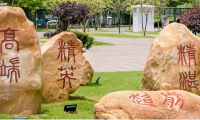
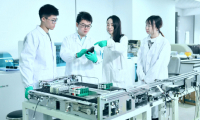
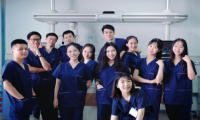

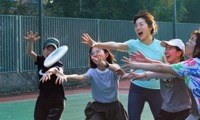

用户登录
还没有账号?
立即注册